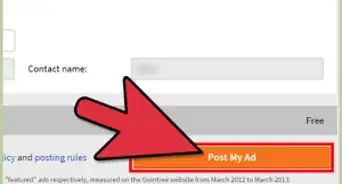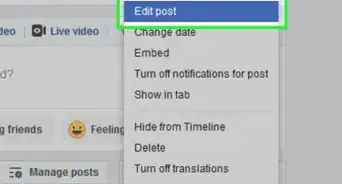This article was co-authored by wikiHow Staff. Our trained team of editors and researchers validate articles for accuracy and comprehensiveness. wikiHow's Content Management Team carefully monitors the work from our editorial staff to ensure that each article is backed by trusted research and meets our high quality standards.
This article has been viewed 222,877 times.
Learn more...
CPM (costs per mille/thousand) is an advertising term that represents the cost of one thousand ad impressions. One impression is essentially a potential customer viewing an ad. CPM is calculated by taking the cost of the advertising and dividing by the total number of impressions, then multiplying the total by 1000 (CPM = cost/impressions x 1000).[1] More commonly, a CPM rate is set by a platform for its advertising space and used to calculate the total cost of an ad campaign.
Steps
Calculating CPM
-
1Determine the campaign budget. An ad campaign is used to convey an idea or product to an audience. If you decide you have 10,000 dollars to spend on advertising, this is half of the data needed for calculating the CPM.
-
2Determine the total number of impressions. In order to calculate the cost of one thousand impressions, you need the total number of desired impressions (target audience for the ad).[2]
- For example, a company wants to run a campaign that will get 500,000 impressions.
- Tools like Google Analytics can be used to determine what kind of traffic a website is getting. Television and print typically use sales or ratings agencies for such data.
Advertisement -
3Do the math. The cost of the campaign divided by number of desired impressions, multiplied by 1000: (10,000/500,000) x 1000 = 20.
- This company would be spend 20 dollars per 1000 impressions on their ad campaign with a budget of 10,000 dollars.
Putting CPM to Use
-
1Calculate the potential cost of an ad campaign. Often a CPM rate is established by someone selling ad space. You can instead use this formula to determine how much your campaign will cost you for a certain number of ad views.
- Total cost = (Total impressions x CPM) / 1000.
- For example: 1,000,000 impressions at a rate of 50 CPM (that’s 50 dollars per 1000 impressions) would cost 50,000 dollars.
-
2Calculate your potential audience with your budget. Similarly, if you have a set rate and budget, you can determine if the potential audience is worth the money spent.
- Potential Audience = (Total cost x 1000) / CPM.
- For example: A 50,000 dollar advertising budget at a CPM of 10 can get up to 5,000,000 impressions.
-
3Sell your space. If you have a website and want to earn advertising revenue, CPM will be calculated by your site’s traffic and the amount of money a company is willing to spend advertising to that audience.
- In web advertising this is often done automatically with a service like Google Analytics. The value of your ad space is calculated and sold to those who bid for it.
-
4Maximize advertising cost benefit. CPM rates are useful to companies and advertisers trying to get their product to the largest audience for the most reasonable advertising cost. CPM is highly variable and can be used to compare costs across different media and spaces.
- Of course, other factors such as demographic information and ad visibility will influence the overall effectiveness of an advertising campaign. CPM is best used as a baseline for cost analysis.
Community Q&A
-
QuestionHow do I calculate CPM month to month?
 Community AnswerThe formula will be the same, however, you will need to calculate your monthly spend and impressions amounts.
Community AnswerThe formula will be the same, however, you will need to calculate your monthly spend and impressions amounts.
References
About This Article
If you want to calculate cost per mille (CPM), start by deciding on your budget for the advertising campaign. Next, determine what your total number of desired impressions will be, for example 500,000. Divide your total budget by your desired impressions, then multiply by 1000 to get your CPM. You can also calculate the potential cost of an ad campaign by multiplying the CPM by your desired target audience, before dividing the result by 1000. If you want to learn how to calculate your potential audience size for your ad, keep reading the article!


































































